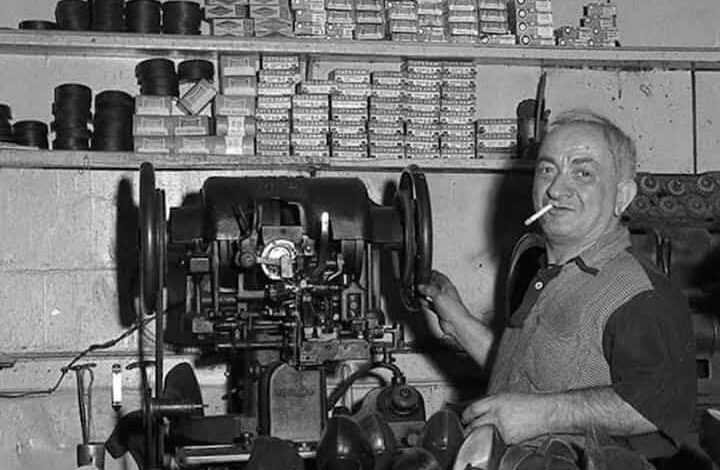
ADVERTISEMENT
Remembering the Local Shoe Repair Shop: A Lost Art in a Disposable World
Introduction
ADVERTISEMENT
There was a time when every neighborhood had a local shoe repair shop. The sight of a cobbler surrounded by well-worn shoes, leather tools, and various supplies, with the distinct smell of leather and polish hanging in the air, was a common experience. These small, often dimly lit shops weren’t just about fixing shoes; they represented a culture of repair, respect for craftsmanship, and resourcefulness. In today’s age of disposable fashion and mass-produced goods, the local shoe repair shop feels like a relic from the past, a symbol of a time when quality and durability were highly valued. Let’s take a walk down memory lane and explore the history, craft, and cultural significance of the neighborhood cobbler.
1. The Role of the Cobbler in Community Life
The local shoe repair shop was often a cornerstone of the community. People didn’t just drop off their shoes; they stopped to chat, share stories, and catch up on neighborhood news. Cobblers knew their customers by name and often took pride in restoring well-loved shoes to near-new condition. There was a mutual respect—customers trusted the cobbler’s skill, and cobblers understood the value of their work, taking satisfaction in preserving something of quality.
Shoes were once an investment. High-quality shoes weren’t cheap, but they were made to last. The cobbler’s job was to extend the life of these shoes, making them an even more worthwhile purchase. Whether it was a simple heel replacement, a full sole repair, or patching worn leather, the cobbler’s skills kept footwear functional and saved customers from having to buy new shoes frequently.
2. Craftsmanship and Skill: The Art of Shoe Repair
ADVERTISEMENT
Cobblering is a trade that requires a range of specialized skills. The process of repairing a shoe involves understanding various materials—leather, rubber, fabric—and knowing how to work with them. Cobblers used tools like awls, hammers, stitching machines, and even their hands to fix and reshape shoes. They could carefully match leather textures, re-stitch seams, and even restore polish and shine to worn shoes.
Unlike modern factory production, where each worker focuses on a single task, cobblers had to master every part of shoe repair. They learned to identify the best type of leather for a repair, determine which adhesives or stitches would work best for a particular shoe, and know how to reinforce worn areas without altering the shoe’s fit or design. Each pair of shoes posed a new challenge, and the best cobblers treated each job as a unique project, carefully assessing and restoring each pair as if it were their own.
This hands-on expertise turned shoe repair into an art form, where skill and knowledge combined with dedication to quality. These skills were often passed down through generations, with apprentices learning directly from experienced cobblers. Sadly, as the demand for shoe repair has decreased, fewer people have been drawn to this trade, making true cobbling skills increasingly rare.
3. The Evolution and Decline of the Shoe Repair Shop
In the mid-20th century, shoe repair shops were thriving. Many people still bought leather-soled shoes and viewed them as valuable, repairable investments. Cobblers could be found in every town, catering to customers who appreciated quality footwear. However, as the decades passed, two major factors led to the decline of shoe repair shops:
ADVERTISEMENT
- Disposable Fashion: Fast fashion changed consumer habits, shifting emphasis from quality to quantity. Cheaper, synthetic materials made shoes less durable but also more affordable to replace. As shoes became cheaper and less repairable, people were more likely to throw away worn-out footwear rather than repair it.
- Rise of Sneakers and Casual Shoes: The shift from leather dress shoes to sneakers and casual shoes also impacted the cobbler’s trade. Many casual shoes are made from synthetic materials that are harder to repair or don’t hold up well with traditional repair techniques. The transition to casual, mass-produced footwear reduced the demand for repairs, contributing to the decline of cobblers.
By the early 2000s, the local cobbler had become a rare sight. While some shoe repair shops still survive, especially in urban areas, they are far fewer in number and often focus on high-end repairs, as people are now more likely to repair expensive designer shoes than everyday footwear.
4. Why Shoe Repair Shops Matter in Today’s World
The decline of shoe repair shops reflects a broader cultural shift toward disposability, but there are signs that attitudes are changing. In recent years, there has been a resurgence of interest in sustainability and the value of repairing rather than replacing. Many people are recognizing that small acts, like repairing a pair of shoes, can contribute to reducing waste and environmental impact. This shift has brought renewed interest in the cobbler’s trade, especially in eco-conscious communities.
Shoe repair shops offer an alternative to the throwaway culture, encouraging people to invest in durable products and take care of them over time. By repairing shoes, customers can reduce their environmental footprint, support local businesses, and gain a greater appreciation for quality and craftsmanship. Some modern cobblers are even embracing social media to showcase their work, reaching a new audience of people interested in sustainable living and “slow fashion.”
5. The Charm of Visiting a Cobbler: More than Just Shoe Repair
ADVERTISEMENT
For those who remember, visiting the cobbler’s shop was an experience in itself. There was a charm to stepping into a small, cluttered space filled with tools, the smell of leather and polish in the air. The cobbler, often a hardworking craftsman with hands roughened by years of work, was always ready with advice on how to care for leather or when to replace heels.
Seeing a pair of worn shoes transform into something refreshed and usable was nothing short of magical. Many people took pride in their repaired shoes, viewing them as symbols of resilience and the value of preservation. Returning to a cobbler meant reconnecting with the past, appreciating the beauty of repairs, and seeing firsthand the dedication to a job done well.
6. The Future of Shoe Repair
While the traditional cobbler may be rare, the demand for repair services is seeing a gradual revival. As consumers become more environmentally aware, they are seeking out ways to reduce waste and extend the life of their belongings. Shoe repair shops are an essential part of this movement, and in some cities, they’re making a comeback.
Today’s cobblers are also adapting to modern needs, with some offering services like designer shoe repairs, custom modifications, and even sneaker restoration. Specialized shops now cater to fashion-conscious consumers who want their high-quality or designer shoes to last longer. With this shift, the art of cobbling is evolving to serve a new generation of customers who value both sustainability and style.
Conclusion
The local shoe repair shop represents a way of life that values quality, care, and resourcefulness. Though largely forgotten in today’s fast-paced, disposable society, these shops stand as symbols of an era when people invested in craftsmanship, preserved their possessions, and trusted in the skills of their local tradespeople. In a world where everything is designed to be replaced, the cobbler’s dedication to repair and reuse is a lesson worth remembering.
As we move toward a more sustainable future, the wisdom of the cobbler—repair rather than replace—may come back into focus. For those who grew up with these shops, the memory of the cobbler’s shop remains a cherished reminder of a time when every item had value and a story worth preserving. Today, supporting local cobblers is not just a nod to nostalgia; it’s a meaningful step toward sustainable living and appreciating the art of true craftsmanship. The next time you consider tossing a worn pair of shoes, remember the local cobbler and the possibility of giving those shoes a second life.
ADVERTISEMENT




